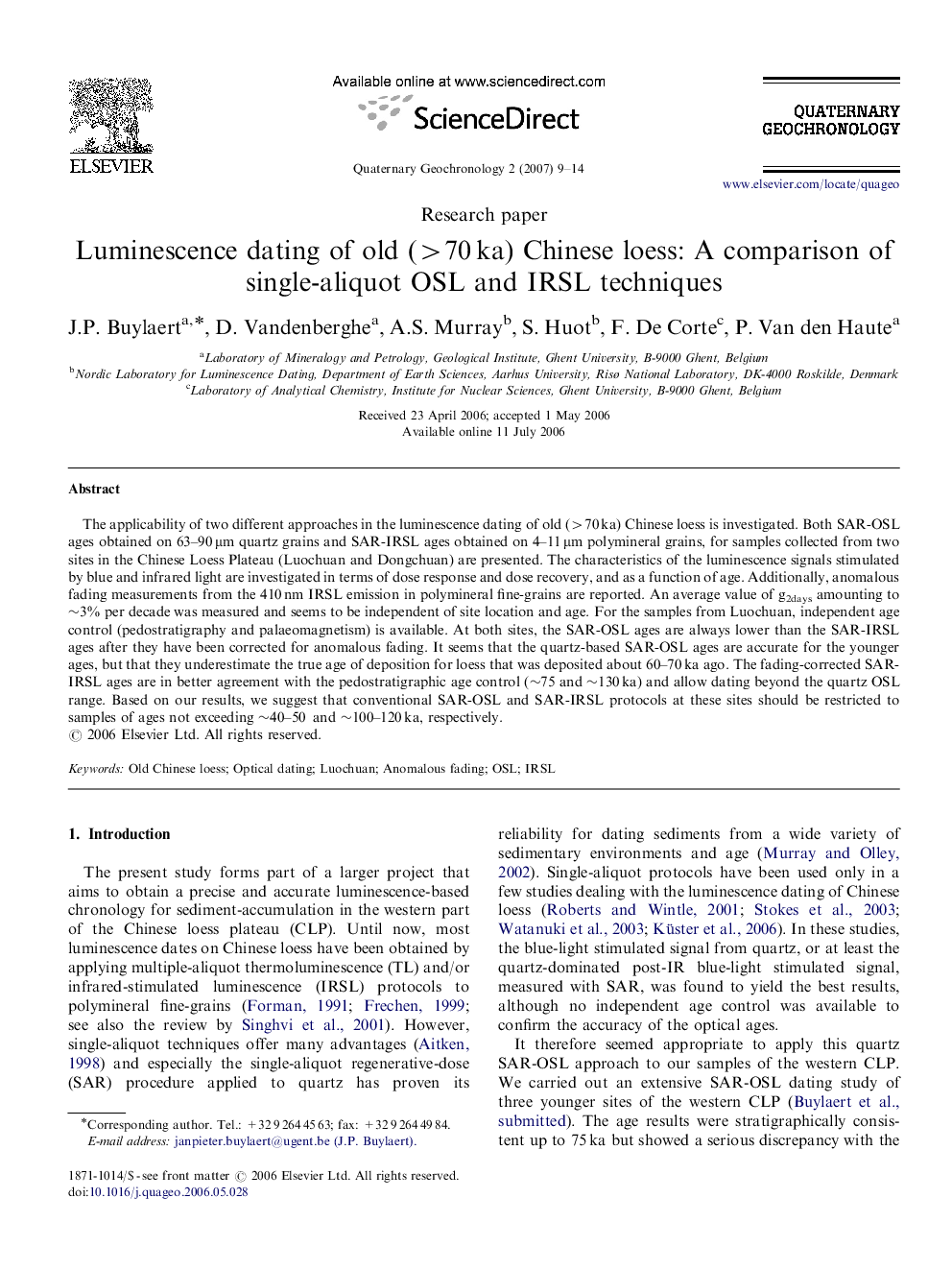| Article ID | Journal | Published Year | Pages | File Type |
|---|---|---|---|---|
| 4725374 | Quaternary Geochronology | 2007 | 6 Pages |
The applicability of two different approaches in the luminescence dating of old (>70 ka) Chinese loess is investigated. Both SAR-OSL ages obtained on 63–90 μm quartz grains and SAR-IRSL ages obtained on 4–11 μm polymineral grains, for samples collected from two sites in the Chinese Loess Plateau (Luochuan and Dongchuan) are presented. The characteristics of the luminescence signals stimulated by blue and infrared light are investigated in terms of dose response and dose recovery, and as a function of age. Additionally, anomalous fading measurements from the 410 nm IRSL emission in polymineral fine-grains are reported. An average value of g2days amounting to ∼3% per decade was measured and seems to be independent of site location and age. For the samples from Luochuan, independent age control (pedostratigraphy and palaeomagnetism) is available. At both sites, the SAR-OSL ages are always lower than the SAR-IRSL ages after they have been corrected for anomalous fading. It seems that the quartz-based SAR-OSL ages are accurate for the younger ages, but that they underestimate the true age of deposition for loess that was deposited about 60–70 ka ago. The fading-corrected SAR-IRSL ages are in better agreement with the pedostratigraphic age control (∼75 and ∼130 ka) and allow dating beyond the quartz OSL range. Based on our results, we suggest that conventional SAR-OSL and SAR-IRSL protocols at these sites should be restricted to samples of ages not exceeding ∼40–50 and ∼100–120 ka, respectively.
